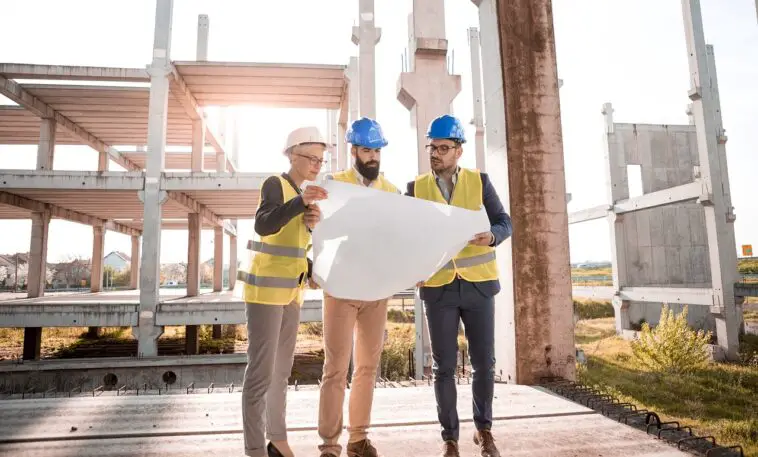In today’s world, the construction industry is increasingly embracing sustainable practices to minimize its environmental impact. As someone who has been actively involved in sustainable construction projects, I have witnessed firsthand the positive changes these practices can bring. In this article, I want to share my personal experience and delve into ten sustainable construction practices that not only reduce environmental harm but also contribute to the overall efficiency and longevity of construction projects. From incorporating green materials to implementing energy-efficient designs, I will also explore how dumpster rental plays a vital role in waste management. So, let’s dive in and discover the sustainable future of construction!
As an advocate for sustainable construction, I have seen how incorporating eco-friendly practices can revolutionize the industry. Sustainable construction aims to create structures that are environmentally responsible and resource-efficient throughout their lifecycle. By adopting sustainable approaches, we can minimize waste, conserve energy and water, reduce pollution, and create healthier living and working spaces. Let me share my personal experience and explore ten key sustainable construction practices that are gaining momentum in the industry today.
Using Eco-Friendly Materials
In my recent construction project, we prioritized the use of eco-friendly materials. We sourced recycled steel, reclaimed wood, and bamboo for various components of the structure. Not only did this reduce the carbon footprint, but it also added a unique aesthetic appeal to the building. We also opted for low-VOC paints, ensuring better indoor air quality for future occupants.
Efficient Energy Management
Energy efficiency was a top priority for our project. We incorporated advanced insulation techniques, energy-efficient lighting systems, and solar panels to harness renewable energy. Witnessing the significant decrease in energy consumption throughout the project’s lifespan was truly rewarding. Not only did we reduce our environmental impact, but we also achieved long-term cost savings for the building owners.
Water Conservation Techniques
Water scarcity is a pressing issue, and our project aimed to address it through water conservation techniques. We installed low-flow toilets, utilized rainwater harvesting systems, and implemented graywater recycling. These measures helped us significantly reduce water consumption while ensuring the project remained sustainable and environmentally responsible.
Implementing Renewable Energy Sources
Incorporating renewable energy sources into our construction project was a game-changer. By utilizing solar panels, we were able to generate clean energy on-site, reducing our dependence on fossil fuels and minimizing carbon emissions. Witnessing the building being powered by the sun’s energy was both awe-inspiring and inspiring for everyone involved.

Designing for Passive Heating and Cooling
Passive design techniques played a crucial role in our project’s success. We optimized the building’s orientation, incorporated high-quality insulation, and strategically placed windows and shading devices to maximize natural light and ventilation. This not only reduced the need for artificial lighting and mechanical cooling systems but also created a comfortable and energy-efficient environment for the occupants.
Embracing Modular and Prefabricated Construction
Modular and prefabricated construction methods proved to be a game-changer for us. By manufacturing building components off-site, we minimized waste and achieved higher precision and quality control levels. This approach also facilitated using Kubota aftermarket parts, which provide high-quality construction equipment at a more affordable price than original equipment manufacturers (OEM).
These parts not only saved us money but also supported the long-term sustainability of the project by extending the lifespan of the machinery used. The satisfaction of witnessing a well-executed and sustainable project was unparalleled.
Prioritizing Indoor Environmental Quality
Our project emphasized creating a healthy and comfortable indoor environment. We carefully selected low-emission materials, designed for natural ventilation, incorporated green spaces, and ensured optimal acoustics. The positive impact on the well-being and productivity of the occupants was tangible, making the project a true success.
Sustainable Site Development and Landscaping
Preserving natural resources and promoting biodiversity were at the core of our site development efforts. We implemented erosion control measures, utilized native plants in the landscaping, and optimized the site layout for natural drainage. Witnessing the transformation of the site into a sustainable ecosystem was a fulfilling experience for our entire team.
Waste Management: The Role of Dumpster Rental
Effective waste management was a vital aspect of our sustainable construction project. We partnered with a reliable dumpster rental service that provided appropriately sized dumpsters for collecting and separating construction debris. Through their efficient waste removal and recycling practices, we minimized landfill waste and ensured the responsible disposal of materials. Dumpster rental played a crucial role in maintaining a clean and organized construction site.
Conclusion
Through my personal experience in sustainable construction projects, I have witnessed the transformative power of adopting environmentally responsible practices. The ten sustainable construction practices discussed in this article, backed by my firsthand experience, pave the way for a greener and more efficient future.
Also, you can prefer Skip Hire Herne Bay services that facilitate construction waste removal efficiently. Offering various skip sizes, they ensure prompt and eco-friendly disposal, supporting a seamless construction process from start to finish.
By incorporating these practices into construction projects, we can reduce our environmental impact, conserve resources, and create healthier spaces for generations to come.




